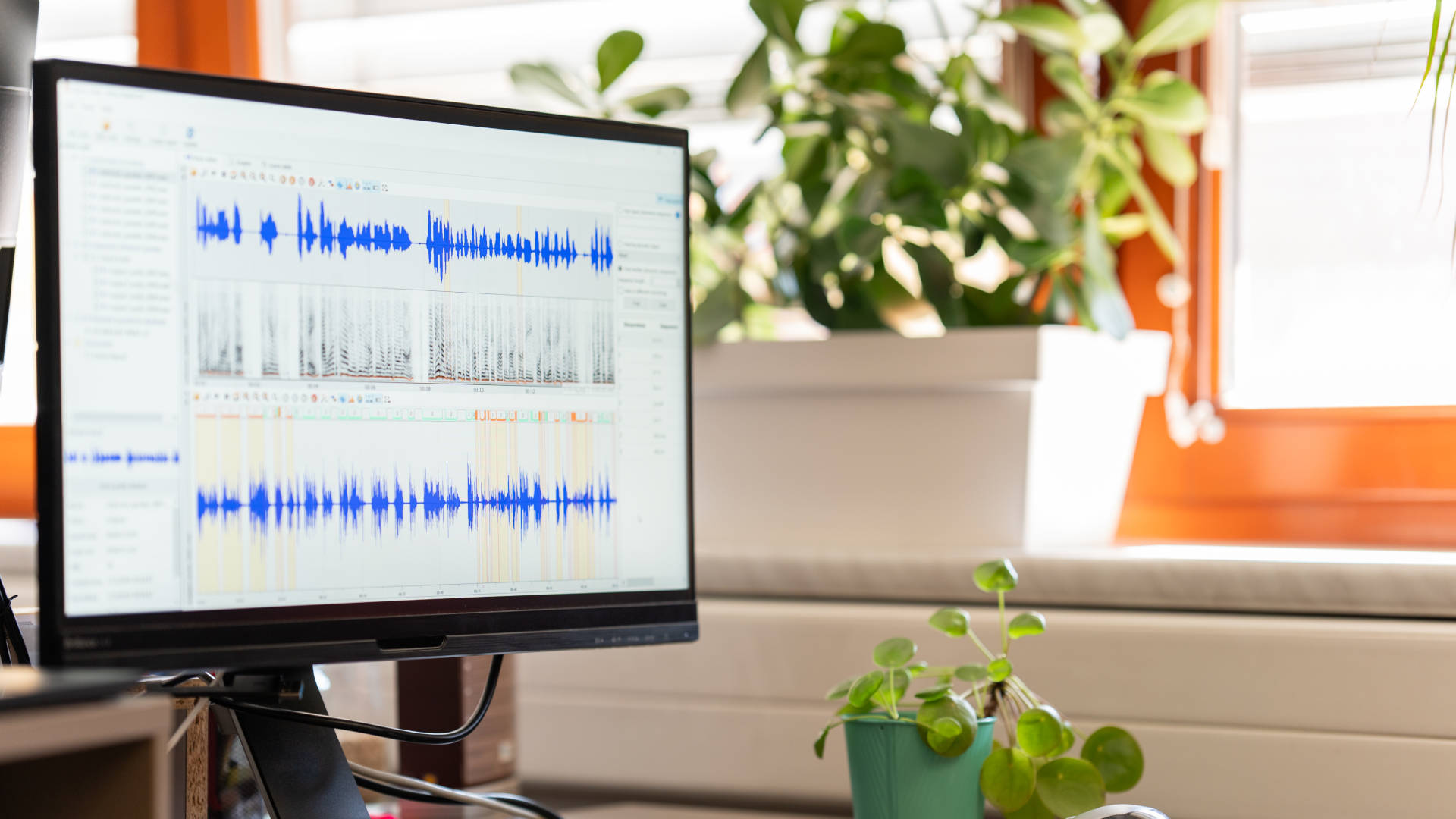Benefits of Combining Speech Analytics and Voice Recognition in Call Centers

October 31, 2022
By Pavel Jiřík in Blog
Analyzing your customer calls can tell you more about your business and its clients than anything else. You can learn about customer satisfaction, reasons for churn, service issues, agent performance, and even what your competitors are offering or what their weak points are – all just by listening to what your clients have to say.
However, considering how many phone calls your call and contact center answers every day, manually reviewing each of them would be never-ending work. Fortunately, speech analytics provides a way to monitor and analyze all of your calls, no matter how many of them you answer per day.
With speech analytics, you can optimize processes, improve the customer experience, drive sales, and more. And while this method can be pretty powerful on its own, the benefits can be truly spectacular when combined with voice biometrics.
In this article, we'll show you just how much you could gain from combining those two technologies together - for the benefit of both your customers and your business.
What Is Speech Analytics?
Speech analytics is a technology that can analyze customers' conversations with agents in real-time to detect specific keywords, phrases, and voice attributes. Moreover, it can analyze all recordings in the call center's database for required keywords, even if thousands are stored there.
This way, call center managers can quickly identify callers' needs, expectations, and main issues, as well as areas for improvement in their businesses. Speech analytics platforms can work in two ways:
- Post-call analytics – this type analyzes calls that have already ended and are stored in the database. The platform can either analyze one recording looking for specific details (like adhering to the customer service guidelines) or examine a large number of calls for repeated keywords, phrases, or trends. This type of analytics could, for example, suggest reasons for a recently low customer satisfaction rate or what the most significant issues that your agents face during calls are.
- Real-time analytics – compared to post-call, real-time analytics monitors ongoing calls rather than those already finished and alerts management if it notices something going wrong. For example, the analytics platform can detect when a customer starts getting frustrated during a call. Then, the call center manager will get an alert that the agent responsible might need more help with the call, together with an overview of the situation.
Today, the majority of companies use both types of speech analytics: post-call for finding out more about agents’ performance, call trends, and customer issues; and real-time for quickly noticing and reacting to agents having difficulties. Using real-time monitoring and analytics can also be incredibly helpful for checking that all agents follow call scripts and customer service guidelines.
For example, let's say that your agents have it written in their call script that they have to verify a caller's identity in a specific way. If an agent skips this step entirely or only asks one security question and ends on it, a real-time speech analytics solution can send an alert to notify the agent of their mistake.
Why Should Call Centers Use Speech Analytics?
According to ResearchAndMarkets, the Speech Analytics market is expected to grow from $1.8 billion in 2021 to $4.5 billion by 2026. Seeing how comfortable consumers now are with using their voices for searching online or authenticating themselves at a bank, the growing interest in speech analytics tools is obvious.
The statistics only back this up:
- Speech analytics can reduce average handle time by up to 40% and increase the number of customers who successfully solve their problems through self-service by 5 to 20%.
- 40% of companies say they rely on artificial intelligence (AI) to help with their CX strategy, and 71% find AI helpful for personalizing the customer experience.
- Call center agents who use AI-powered speech analytics tools report 69% higher satisfaction levels.
- It's estimated that speech analytics can drive cost savings of up to 30% and deliver customer satisfaction score improvements of 10% or more.
- 71% of consumers prefer to conduct queries by voice instead of typing.
A big reason for the popularity of speech analytics is that these solutions can be used in various industries and for different purposes. As an example, speech analytics in contact centers can help with the following:
- Reducing the number of repeat calls – by analyzing all calls in the database for phrases like "I already called last week with the issue" or "I have called the support three times already", companies can find out exactly why customers make repeat calls and what could be done to help agents solve those issues during the first call.
- Gathering feedback – speech analytics is a fantastic tool for gathering customer feedback as well. Simply by collecting and analyzing what people say on the phone, call centers can learn a lot about how customers see the company, their products or services, and agents' performance.
- Spotting potentially troublesome callers – a perhaps unexpected but very useful benefit of speech analytics is that it can identify difficult callers and suggest what actions agents should take when handling them. If the analytics solution notices that a caller starts to use threatening or abusive language toward an agent, let's say the platform can immediately alert management that their help may be required to de-escalate the situation.
- Ensuring that agents adhere to the company's compliance and etiquette guidelines – using speech analytics tools helps managers find areas where agents might need more training. If an agent deviates from the script, uses inappropriate language, or loses their temper during a call, the speech analytics platform can send them a warning first and then alert management about the issue. As managers can find out about any problems during calls almost instantly, providing agents with assistance is made easier. This increases the quality of customer service and also maintains a professional image of the contact center.
- Finding cross-selling and upselling opportunities – you could see a significant increase in revenue in your contact center from using real-time analytics for upselling/cross-selling. Speech analytics can, for example, send a promotional pop-up to an agent when a customer mentions a product name or says they are looking for a specific type of item. This could be especially useful for new agents who wouldn’t have to rely only on their memory to pick the right product - the speech analytics platform would choose the right one based on what the customer said.
So, as you can see, speech analytics platforms can help you with plenty of tasks and problems: from monitoring and improving your staff performance to boosting your customers' experience and, ultimately, your revenue.
However, if you paired a speech analytics tool with voice biometrics, you could gain even more.
What Is the Difference Between Speech Recognition and Voice Recognition?
First, let's clarify one point of confusion: speech recognition and voice recognition (the basis of voice biometrics) are not at all the same. The former identifies what words or phrases are being said, while the latter recognizes the voice of the person speaking.
The way in which both technologies work is also different: speech recognition identifies spoken words or phrases and converts them into text-based content that is understandable by a machine which then performs the user's desired action. In contrast, voice biometrics applications use the unique characteristics of a voice (such as cadence, accent, pitch, and tone) to identify the speaker.
Voice biometric solutions can either be "active" (the user must say a specific password or phrase to be recognized by the solution) or "passive" (the caller can be authenticated during the normal flow of conversation).
During each call, the speaker's voice is compared to a stored voiceprint (a mathematical representation of the customer's voice). If the caller's voice matches their voiceprint in the database, they are authenticated straight away. On the other hand, any callers that don't pass the biometric check will be immediately flagged as suspicious.
How Can Businesses Use Speech Analytics and Voice Biometrics to Improve Customer Support?
Individually, speech analytics and voice biometrics can already offer plenty of benefits to companies. By utilizing voice biometrics, they can reduce the time spent on other forms of caller verification and prevent any suspicious callers from causing harm. Speech analytics, meanwhile, can give call centers plenty of information about their agents' performance, customers’ satisfaction, and more.
Once these two technologies are combined, though, the results can be truly stunning. Below are a few examples of how your call center could benefit from using both technologies.
Spotting Difficult Customers and Potential Fraudsters
Call center agents have to deal with troublesome customers virtually every day – from those who think they will get what they want by screaming at the agent, to scammers inventing all sorts of stories to convince agents to share private data. Wouldn’t it be helpful for them if they could recognize a potentially difficult or suspicious customer on the line and quickly alert their superiors? Well, that's exactly what voice biometrics and speech analytics can do together.
Let's say you have a customer who regularly contacts your call center claiming they have a problem with your product or service, demanding a discount or a free product as compensation. Real-time analytics would only need a couple of seconds to understand what the customer is saying and then act accordingly by, for example, alerting a superior.
But here, something even better can be done – the voice biometrics system can also record the troublesome customer's voice and store it as a voiceprint. Then, whenever they call again, the voice biometrics platform would immediately recognize them as a "difficult customer" and notify the agent (and superiors).
You can also use this for fighting fraudsters. For example, voice biometrics can immediately spot any caller who attempts to impersonate an actual client or has called before using different credentials. Meanwhile, real-time speech analytics can quickly notice if the caller behaves in a suspicious way (such as asking the agent for their personal information) and alert both them and management about the danger.
Data Mining for Personalizing and Improving the Customer Experience
A customer's call can be a goldmine of information that speech analytics and voice biometrics can help you get the most out of. By analyzing what your customers say during calls, you can learn what they like, what their biggest issues are, and how they interact with your agents. However, voice biometrics can provide you with even more data, such as a person's gender and estimated age.
This way, personalizing all interactions with customers becomes a piece of cake for your call center. Thanks to the data you gather with speech analytics, you can segment your customers into groups and prepare special, personalized offers for each of them.
Meanwhile, voice biometrics will let your agents know who is on the line, allowing them to check all information related to the caller. Knowing their age, for instance, can be handy for setting up a priority queue for elderly people, so they don't have to wait too long in the line.
Call Center Agent Monitoring (Even Remotely)
Recording agents' calls for analyzing their performance is now pretty much a standard. Monitoring calls in real-time isn't quite so common yet, but this might soon change, considering how valuable doing so can be.
Let's say you have added new points to your customer service guidelines and want to ensure that all agents (even those working remotely) follow the script. If the real-time monitoring system notices an agent is going off-piste or they have forgotten about the new script, a quick reminder or alert can be sent in order to rectify the mistake straight away.
Knowing that you are keeping an eye (or ear) out and will learn about any issues your agents might have can also put them at ease since they can rest assured that you'll be there if and when they need it.
Remote working comes with another challenge – securing customer information, conference rooms, and call center phone lines from unauthorized access. Here's where voice biometrics comes in handy by restricting access to only people who pass a voice check.
Since voice biometrics only needs a device with a microphone to work, your remote team won't have to buy and carry around any extra devices either. Instead, they can authenticate themselves straight away just by talking to their phone or laptop.
Passive biometrics will be especially useful here since it can verify someone just by hearing them speak naturally. As such, there's no risk of a third party overhearing the password and attempting to use it, especially if the agent is outside their office.
Conclusion
If you don't already use speech analytics and voice biometrics in your company, now is a perfect moment to start. Speech recognition tools can give you tons of valuable data for optimizing call center performance and increasing customer satisfaction, while voice biometrics gets them verified quickly and keeps fraudsters at bay.
Combining those two platforms, you'll be able to run your business much more efficiently and safely in order to make your customers happier as a result.


